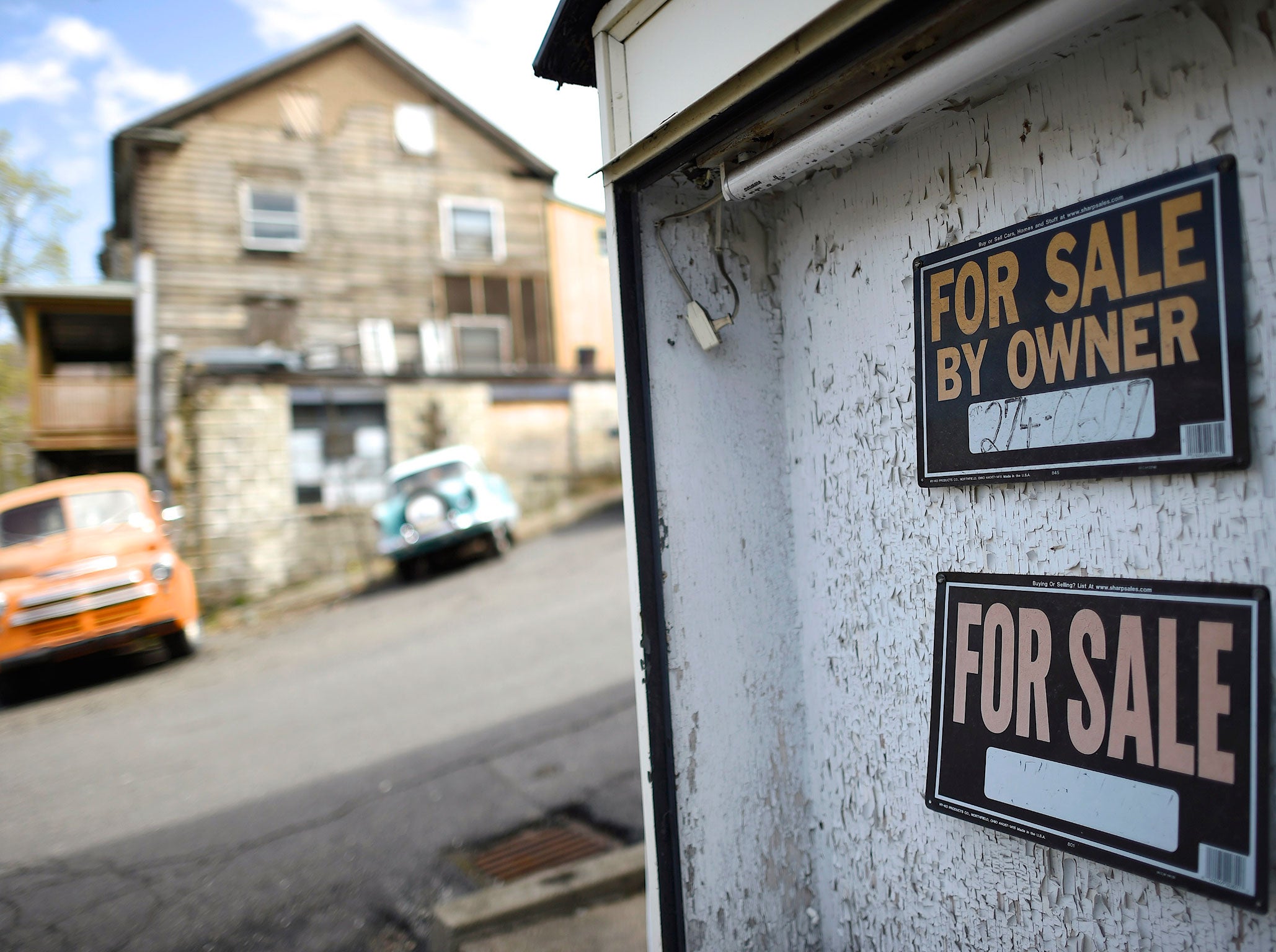Only two per cent of local economies in US have recovered from recession
Survey says only fraction are back to 2008 levels

Your support helps us to tell the story
From reproductive rights to climate change to Big Tech, The Independent is on the ground when the story is developing. Whether it's investigating the financials of Elon Musk's pro-Trump PAC or producing our latest documentary, 'The A Word', which shines a light on the American women fighting for reproductive rights, we know how important it is to parse out the facts from the messaging.
At such a critical moment in US history, we need reporters on the ground. Your donation allows us to keep sending journalists to speak to both sides of the story.
The Independent is trusted by Americans across the entire political spectrum. And unlike many other quality news outlets, we choose not to lock Americans out of our reporting and analysis with paywalls. We believe quality journalism should be available to everyone, paid for by those who can afford it.
Your support makes all the difference.After months of stories of a burgeoning US economy, a sobering report on the economic recovery of American counties has emerged, casting shadows on the recovery narrative.
Of the 3,069 counties in the US, just 65 — or 2 percent — of them are in the same or better position than they were when the recession began in 2008, according to a report from the National Association of Counties that was released on Monday.
For clarity, there are 3,141 counties or county equivalents in the US, but NACO only reported on ones with a county-level government.
Counties are considered to have recovered if they met or exceeded their pre-recession levels in four economic categories: jobs, unemployment rate, economic output and home prices. Of the 65 that have recovered, not one of them has a population above 500,000.
While US employment has eclipsed its precession level, the unemployment rate remains stubbornly high, at 5.6 percent in December, according to federal data. Most of the country continues to see a slow growth in home prices after the bursting of the housing bubble, which added weight to the economic avalanche.
“For everyday Americans, this sluggish and uneven recovery explains why they do not feel the good national economic numbers,” said Emelia Istrate, research director of the National Association of Counties, which published the report. “The national economic numbers have been looking good over the last year and the national indicators show that growth has continued, but this is only part of the story.”
Ms Istrate went on to say that only one-quarter of US counties have at least the same number of jobs they had prior to the recession. Even worse, 95 percent of counties – the administrative division between a state and municipality - have worse unemployment rates than they did before the recession.
The majority of counties that are in a better position than they were seven years ago have benefitted from the recent US energy boom. Of the 65 recovered counties, 24 are in Texas and 16 are in North Dakota.
The other recovered counties are generally away from traditional US economic hubs, with the Midwest showing well in the report. Anderson County, S.C. was the only county on the East Coast to have recovered and no West Coast counties on the US mainland recovered across all four factors.
Despite the staggering lack of county economic growth, the report does offer a glimpse of hope for local economies. Around 50 percent of county economies improved on all four economic factors from 2013 to 2014 and 63 percent of counties saw faster job growth in 2014 than in the previous year.
Researchers explain the apparent dichotomy between local and national figures by pointing out that not all US counties are equal. Indeed, the 124 largest counties in the US --4 percent of all counties - account for roughly 50 per cent of the national economy. This means that there are a couple thousand counties in the US that have very little consequence on the overall economic figures.
Join our commenting forum
Join thought-provoking conversations, follow other Independent readers and see their replies
Comments